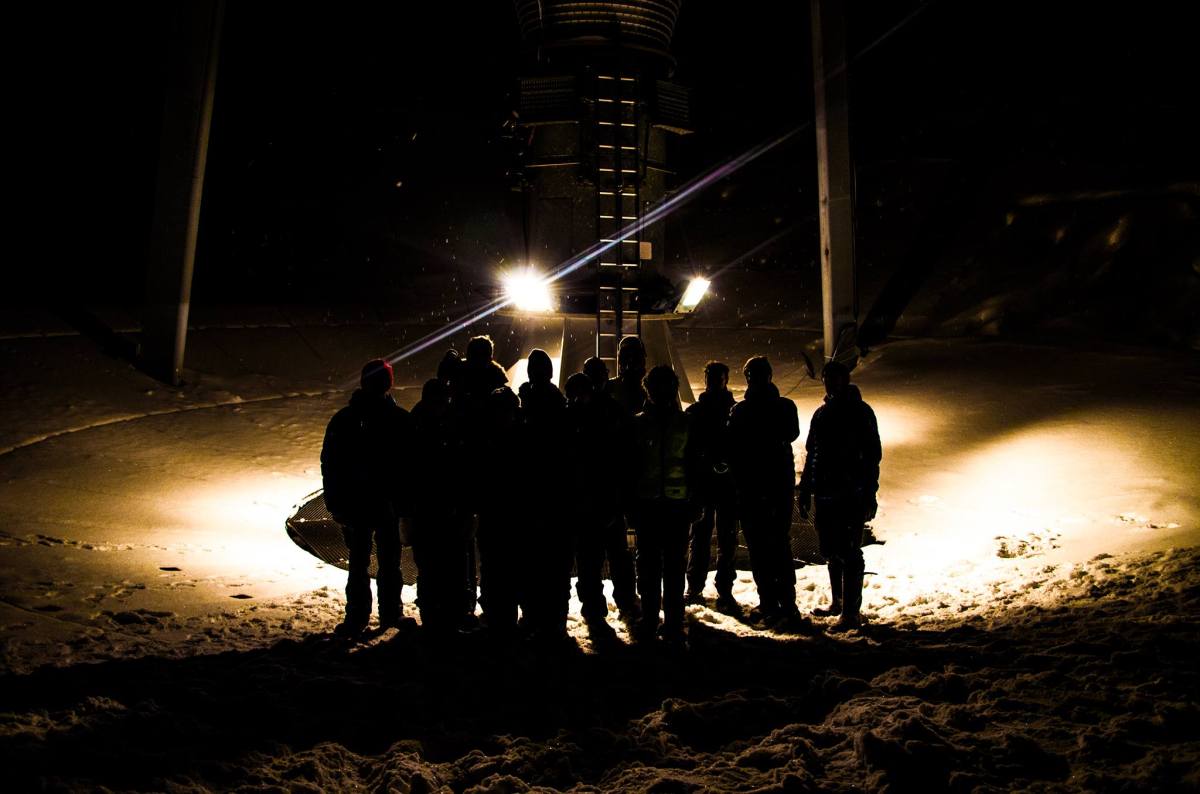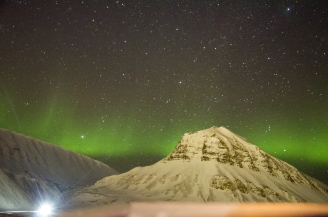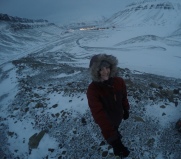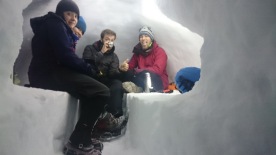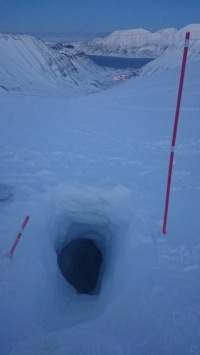Two week fieldwork special, as promised.
Week 1: The Kjell Henriksen Observatory (KHO).

KHO is an optical observatory which contains more than 25 optical instruments and also has more non-optical instruments on site. The instruments here study the middle to upper polar atmosphere and monitor the aurora. It’s located at an altitude of 520m some distance from town. The last bit of the journey had to be completed by belt wagon due to the conditions further up the mountain. This was done in two shifts due to the size of the group, but we obviously all tried squeezing in after the last trip of the week.
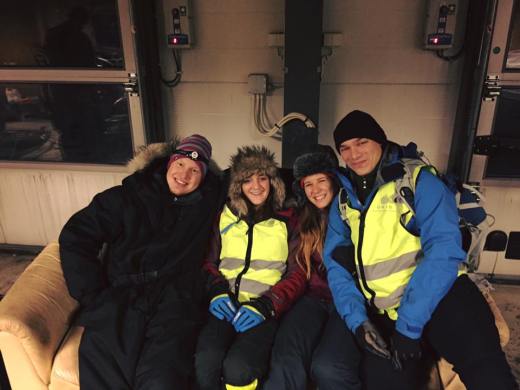
We learnt how to use the ACE data to predict the time it would take for an aurora to reach us after the necessary criteria were fulfilled in the data chart. The main criterion we look for is the Bz component to turn South i.e the red line at the top dips below the dotted line (to see the data more clearly, change the duration to 2 hours). Monday and Tuesday were spent touring all the equipment in the observatory and learning all about them and how they work and monitoring the aurora in the downtime (amongst other activities, eg: hangman).
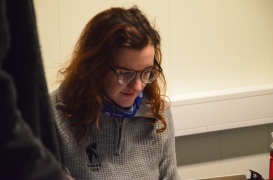
Wednesday was calibration day. We had the daunting task of helping to calibrate 3 of the instruments at KHO, a job which is only done once a year on these instruments! This also meant lots of outside time on the roof moving a big white board (it was a little more sophisticated than simply a white board, but I can’t remember the correct name) over the instruments in need of calibration. It went well though, the report back from Pål was that the numbers indicated a good calibration (thankfully, as they told us before that a calibration had never had to be redone thanks to student’s incompetence, something we didn’t want to buck the trend on). The meridian scanning photometer (MSP) was calibrated on Thursday. We didn’t have too much to do with this one (and it’s calibrated once a week anyway). We then got to look at pretty aurora and eclipse pictures and videos.

During the week, we saw aurora 3 out of the 4 nights we were there (all pretty much correctly predicted after our practice on Monday night). Tuesday night, it began to cloud over later on and we unfortunately missed a pretty would-have-been spectacular auroral substorm, but we still had some pretty good views up at the KHO anyway. We also got some incredible sightings of the Milky Way from up there. Due to equipment sensitivity, we weren’t allowed to use headlamps and there are no outdoor lights so there was no light pollution from out immediate surroundings.
Week 2: EISCAT Svalbard Radar
The European Incoherent Scatter (EISCAT) radar in Svalbard, one of 10 incoherent scatter radars, and one of three highest standard facilities operated by the EISCAT Scientific Association. The EISCAT Svalbard Radar has a stationary 42m diameter dish which is field aligned and a movable 32m dish.
We were able to get to EISCAT by car only, so this cut the travel time down as we could all get straight there in one go. For this week, we had to split into groups of 3 and decide on an experiment. Throughout the week, everyone got to run their experiments for two hours using the radar. One group would always be in the control room with the group doing to experiment to run the computers controlling the data, whilst everyone else would stay in the kitchen and watch analyse the data coming through (and cook pizza).
It was cloudy all week so we didn’t see any aurora, but my group experiment was to point the radar South and monitor the auroral oval and we managed to pick up the expected data for an aurora during our two hour experiment through the clouds. Getting to choose an experiment to run, then use this radar to collect our own data was a really incredible experience. I felt so lucky to have been given that opportunity whilst I am here.
I got to move that 32m radar during my experiment, I felt powerful (if not also slightly terrified). I also got to turn off a couple of the transmitters (it involved turning a switch and pulling a big leaver, this also made me feel powerful).
We would always arrive about an hour before transmitting begun (the radar would run between 18:00 and 22:00 UT every evening). On one of the evenings, we were allowed to go and climb inside the 42m dish!

It was a pretty special two weeks, filled with Physics and fun (and pizza and partybrus).
Here’s a group photo at the EISCAT Radar control room with Kjellmar and and Anja:
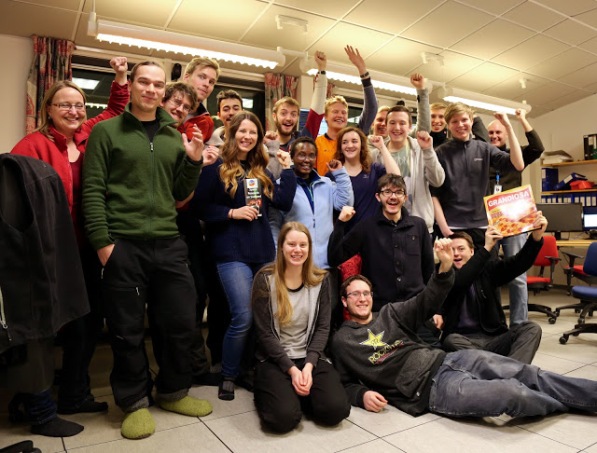
Next time, hear all about my last two weekends of trips. I don’t want to overload too much in one post!
For now, enjoy my incredibly cheesy video of my time so far in Svalbard. Svalbard: The Journey So Far.
Skål!

